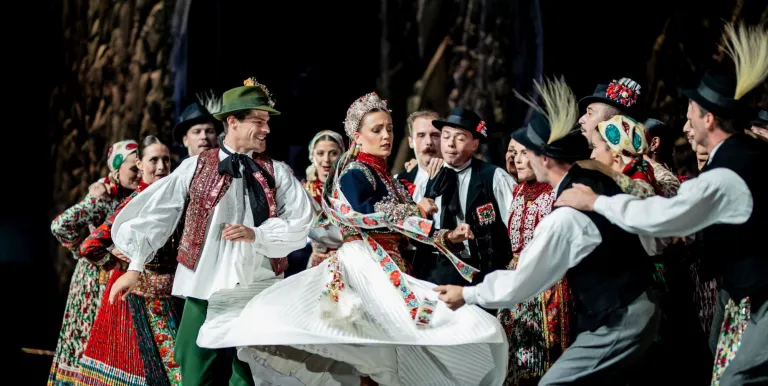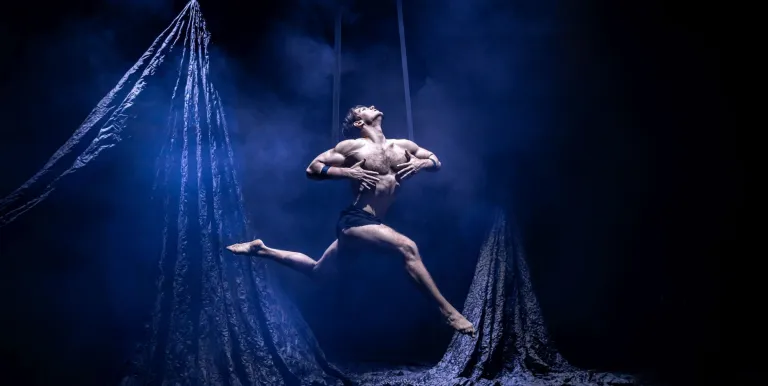Theme and Variations:
Études:
Balanchine–Tchaikovsky
Theme and Variations (Ballet in one act)
Lander–Czerny–Riisager
Études (Classical ballet in one act)
Balanchine's 1947 choreography, now considered a classic, evokes the golden age of 19th century Russian ballet, with all of its imperial pomp and splendour and classical steps gone mad with novel sequences. This plotless work, created to the final movement of Tchaikovsky's Suite No. 3, is often referred to as the “younger sister” of The Sleeping Beauty. This is no mere coincidence: set in a stately ballroom, the male and female soloists, together with the solo and ensemble pieces from the corps, faithfully follow the twelve variations in the movement. The entire work conveys the graceful elegance and structural ideals of classical ballet, with each dance movement reacting to the delicate changes in the music. Together with the musical notes in the composition, it builds up to the final cathartic chords of the closing polonaise.
The subject of Études is classical dance technique and ballet itself. Requiring extraordinary preparation, this choreography is, so to speak, a unique ballet lesson that also serves as an “examination” of the company's technical skills: starting off by the barre, it then goes on to show jumps, turns and pointe technique in increasingly complex exercises, culminating in complicated theatrical combinations and a high level of virtuosity. Harald Lander took his inspiration from Czerny's well-known piano études and developed his choreography for the Royal Danish Ballet in 1948 using a version scored for orchestra. The work reveals the beauty and perfection of the exhausting exercises with glimpses into the various eras of dance history and the character of the legendary ballerina of La Sylphide.
Presented by: National Dance Theatre
-
We wish to inform you that in the event that Müpa Budapest's underground garage and outdoor car park are operating at full capacity, it is advisable to plan for increased waiting times when you arrive. In order to avoid this, we recommend that you depart for our events in time, so that you you can find the ideal parking spot quickly and smoothly and arrive for our performance in comfort. The Müpa Budapest underground garage gates will be operated by an automatic number plate recognition system. Parking is free of charge for visitors with tickets to any of our paid performances on that given day. The detailed parking policy of Müpa Budapest is available here.





